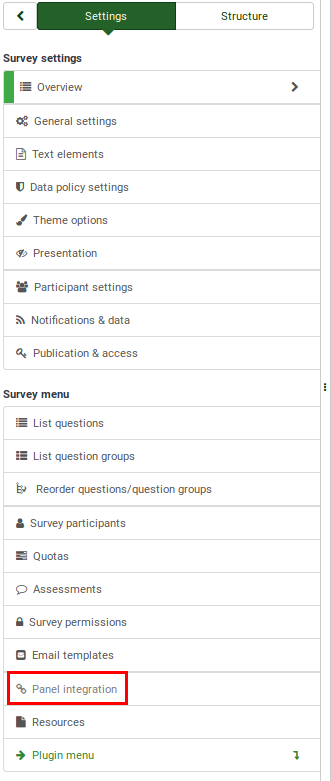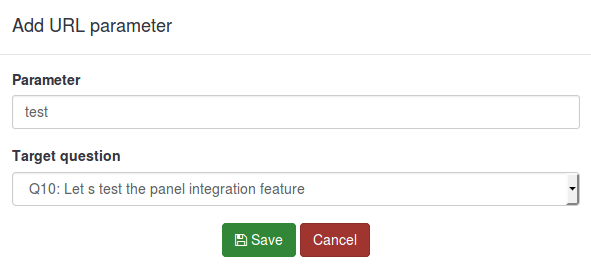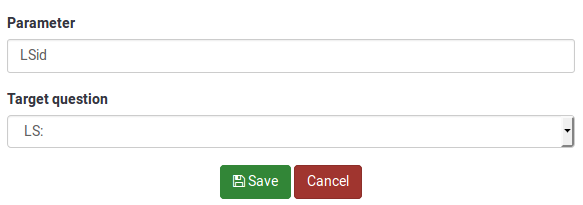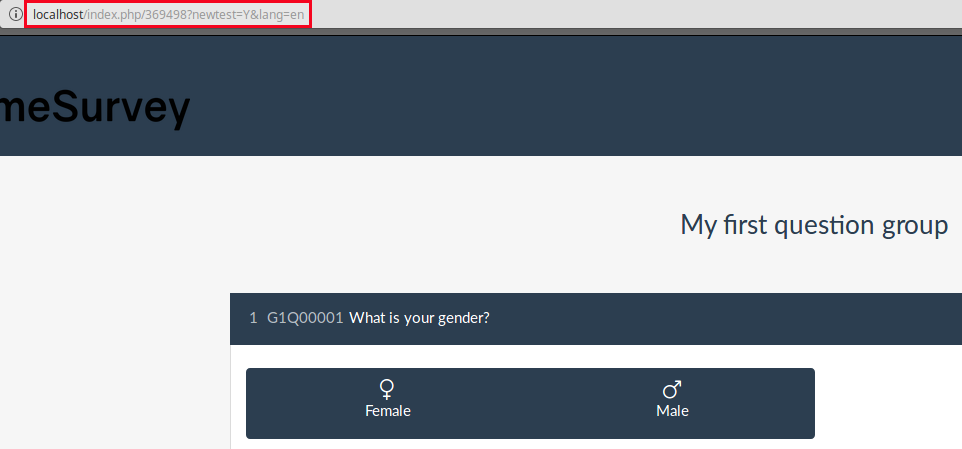Panel Integration
From LimeSurvey Manual
Einführung
Auf dieser Registerkarte können Sie einstellen, welche URL-Parameter von Ihrer Umfrage akzeptiert werden (diese Parameter werden an die allgemeine Start-URL der Umfrage angehängt). Diese Option ist wichtig, wenn Sie Ihre Umfrage mit einem professionellen Umfrage-Panel-Anbieter integrieren möchten, der Ihnen die Teilnehmer zur Verfügung stellt. Dieser übergibt in der Regel eine eindeutige ID jedes Umfrageteilnehmers und Sie müssen diese eindeutigen IDs zur weiteren Verwendung speichern/weitergeben.
Um auf die Panel-Integration Ihrer Umfrage zuzugreifen, gehen Sie in das Umfrage-Menü und klicken Sie auf die Registerkarte Panel-Integration.

Umfrage-Panelintegration
Nach dem Zugriff wird eine leere Tabelle mit der Option "Hinzufügen eines URL-Parameters" angezeigt.

Zwei Felder müssen ausgefüllt werden:

- Parameter: Geben Sie in diesem Feld den Namen des neuen Parameters ein. Sie wird in die URL aufgenommen;
- Zielfrage: Generell wird der URL-Parameter als Frage gespeichert. Es stellt den Ort dar, an dem die Befragten landen, sobald sie auf den Link klicken, der auch den oben definierten Parameter in seiner URL enthält.
Wie benutzt man die Panel-Integrationsfunktion?
A simple example is presented below in which we try to explain how to use the panel integration function.
1) First, create a short/long text question and name it what ever you want (we will use "LS" for the Question code field). Then, enable the always hide this question option, located under the Display tab within the menu of the question.
2) Go to the panel integration tab, and click on the "Add URL parameter".
Select the short/long text question you created in the first step. The respondents that come from the respective professional panel provider will land on the target question. It can be hidden so that the respondents can directly start completing the survey.

The name you pick for the parameter will have to be included in the entry link that you will later supply to your panel provider. It will be named "LSid" in our example. Don't forget to click on the Save button located in the upper right part of the table!
3) Now, you have to set up the entry link that you will send to the your panel provider. To get your survey URL link, click on the Preview survey buttons.

Copy the URL you accessed from the address bar:

Add at the end the newly added parameter: &LSid="xxxxxx". The link should look like this:
http://localhost/index.php/369498?newtest=Y&lang=en&LSid="xxxxxx"
What ever you replace the "xxxxxx" with will be grabbed and stored in the short/long free text question when your respondent lands on that page. For example, I sent to a user the following link:
http://localhost/index.php/369498?newtest=Y&lang=en&LSid=ABCD5
The string after LSid was stored as an answer to the short/long text question.

Examples
The following examples were created in order to help you easily add:
- Redirects if the respondents have finished filling out the survey;
- Redirects if the respondents were screened out due to a quota;
- Redirects link if the quota limit was reached.
The complete link
The complete link has to be inserted into the end URL field that also has to be loaded automatically for everyone who successfully completes the whole survey.
The URL you have to send back to the panel provider should look like this:
https://panelproviderwebsite.com/?return=complete¶metername={PASSTHRU:parametername}
The screenout link
A screenout excludes the participants from continuing the survey because he or she is not a member of your survey target group. For screenouts, you have to set the quota limit field to "0" (zero) and allow the quota URL to be automatically loaded once it was triggered.
Then, add the following link into the quota URL field:
https://panelproviderwebsite.com/?return=screenout¶metername={PASSTHRU:parametername}
The quotafull link
A quotafull excludes participants from continuing the survey, because a certain quota has been exceeded.
https://panelproviderwebsite.com/?return=quotafull¶metername={PASSTHRU:parametername}